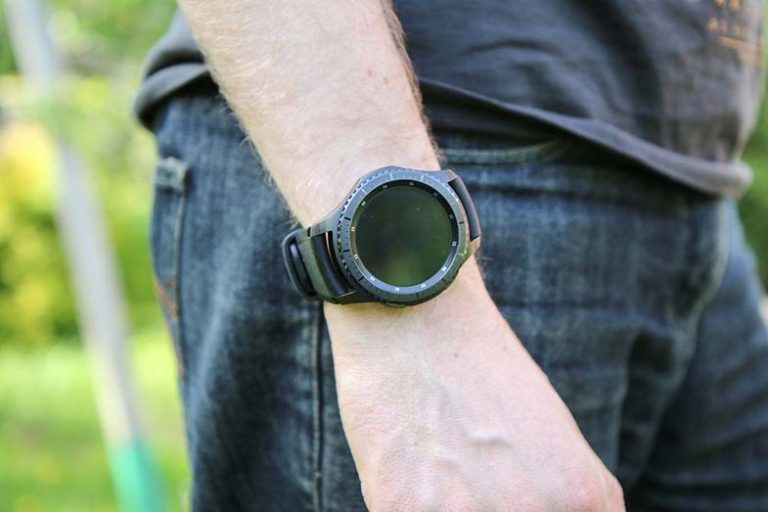8 Tips on How to Sleep with a Broken Elbow
Disclosure: We may get commissions for purchases made through links in this post.
Trying to sleep with a broken elbow can be difficult. In the early stages, you may experience different levels of pain that keep you awake throughout the night. If you sleep in an awkward position or accidentally roll onto it, it can send shooting pains up your arm. With some simple tips, you can save yourself from a lot of sleepless nights. First, after the injury, consult with your doctor on how to properly sleep. They may recommend good positions, specialized pillows, or medicine to take. Take careful note of their professional advice. Furthermore, here are some quick tips on how to sleep with a broken elbow:
- Keep it elevated above the heart to reduce pain and swelling.
- Sleep upright in a sofa chair or bed.
- Use lots of pillows to help position yourself.
- Dress Comfortably.
- Take over-the-counter pain medicine.
- Ice the elbow to relive pain.
- Exercise to help sleep easier at night.
- Relax with breathing techniques.

Elbow Bones
The elbow is a joint made up of 3 bones: The humerus, ulna, and radius. The humerus is a long bone that sits in the upper arm between the shoulder and elbow; The ulna is a forearm bone located between the elbow and pinkie finger; and the radius, or radial bone, is another forearm bone that runs from the elbow to the thumb. The ends of these bones form the elbow joint which contains a rubber-like texture called cartilage. This makes it easy for the bones to slide against each other.
When You Break a Bone
The elbow doesn’t have a lot of muscle or soft tissue to protect it. This makes it easy to break if it is hit hard from an object or by falling directly on it. It can also break from falling on an outstretched hand.
After breaking your elbow, you may be prescribed a sling, cast, or even surgery. The way you sleep will have to change since it is important to prevent rolling onto it or moving into an awkward position that may further injure it. When the cast or sling is removed, the elbow still continues to heal. It may be stiff, weak, and difficult to move. It is important to maintain a comfortable position for the entire body during sleep. Here are some ways on how to sleep with a broken elbow:
1. Position Yourself
How you sleep with a broken elbow is very important to avoid further pain and be able to sleep throughout the night.
With a Cast
Prop a pillow up vertically against the wall so that half is on the wall and the other half is on the bed. This will make it easier to slide down into a flat position after positioning your arm.
Next, sit with your back against the pillow and place a second pillow beside you. This is for your arm to rest on and to keep it elevated once you lay down.
Once seated and the arm is rested on the pillow, slowly slide the body down so that you are comfortably laying on your back. Keep the arm rested on the adjacent pillow, high enough so that it is above the heart. You may place a second pillow under the arm if needed. By keeping the arm elevated above the heart, this will help reduce swelling and pain. Try to sleep in the middle of the bed to avoid falling off in the middle of the night.
With a Sling
When you sleep on a bed, the arm within the sling will naturally want to fall back, or outwards. As it does this, the muscles tighten to keep it in place. This can be very painful. To prevent this, slightly roll over to the opposite side of the injury and place a pillow vertically under the back of your shoulder to the bottom of the sling. As you roll back onto the pillow, your elbow will elevated in more of a neutral position that is more comfortable to sleep in. This position requires you to sleep mostly on your back, which can be difficult for some. If you’re a regular side sleeper, sleeping on your back can take some getting used to. It’s important to find a method that works for you. It may involve surrounding yourself with pillows, stretching before bed, or elevating your legs. Everyone is different so experiment with a position that is comfortable and prevents you from rolling around.
2. Sleep Upright
In the early stages of the injury, you may find it easier to sleep in a recliner bed or sofa chair with armrests. This may help position the arm in a more comfortable position to prevent pain and swelling. The arm should be able to hang down naturally, rather than positioned in an awkward state throughout the night which may cause stiffness. The body naturally wants to lay down into a flat position so surround the body with pillows for extra comfort and and prevent rolling into an awkward position.
3. Use Lots of Pillows
Surround yourself with pillows for extra comfort. Place a large pillow under both arms, not just the injured one. This keeps the body in a neutral position. It can also be relaxing to have both arms slightly elevated. While laying on your back, place a pillow under your knees to help align the spine and prevent back pain in the morning. It also stabilizes the body and keeps you from rolling around. Use a good, quality pillow that supports both the head and neck. You may also want to invest in a specialized pillow (view on Amazon) made for keeping the body elevated.
For Side Sleepers
For side sleeping, it’s important to use a lot of pillows to keep you in place. If your sling is on your right arm, lay on your left side and place two or three pillows up against your stomach. This prevents the body from rolling onto the stomach and further damaging the elbow. Do the opposite if your sling is on your left arm. You can also fold a pillow to get more height so that it is level with your injured arm.
4. Dress Comfortably

Before going to bed, you want to make it as easy as possible to fall asleep. One way to do that is to dress comfortably. Wear light, breathable clothing to avoid sweating and itching. A cast or sling can increase the body’s temperature so wearing light clothing should help keep it cool. The body should be at a neutral temperature throughout the night to stay relaxed and promote good blood circulation. Some ideas of clothing include:
- Clothing made from cotton, linen, or bamboo
- Lightweight sweatpants and long-sleeve shirt during Winter
- Good, quality pajamas that keeps the body cool during the night
5. Take Over-the-Counter Pain Medicine
Pain medicine can help relieve some of the soreness before going to sleep. over-the-counter medication, such as acetaminophen (Tylenol), may be recommended by your doctor. Avoid anti-inflammatory drugs such as ibuprofen and aspirin. They may actually slow down the healing process because they prevent the production of chemicals created in the body specifically for healing broken bones. When taking the medication, closely follow the instructions on the label and only take what is needed.
Sometimes the pain may be too sever for over the counter medicine. In that case, consult with your doctor to determine the best course of action. You may be given a prescription or sent to a specialist for further treatment.
6. Ice the Elbow
Icing the injury can help reduce pain and swelling and help get a good night’s rest. You can use an ice pack, a bag of frozen peas, or ice cubes within a cloth. Apply the ice to the inured area for about 20 minutes every 4 hours for the first 48 hours. Avoid direct application on the skin since this can cause skin damage. If you do, only apply it for a short amount of time. Wrap it in a cloth, paper towel, or shirt. If you have a cast or splint, make sure it stays dry. Most importantly, follow the instructions from your doctor. For instance, do not remove the splint unless advised to do so. If it gets wet or soft, contact your doctor. With a cast, it may be difficult to ice the injury. Instead ice around the injury such as further up the arm. The cold should provide relief to the injured area.
Try cold hot therapy with the Elbow Support Wrap Gel Pack (view on Amazon). It provides compression together with hot and cold treatment to give your elbow some relief.
RICE Method
- Rest: Rest as much as possible following the injury to prevent further problems.
- Ice: Apply ice to the injury or around it to provide relief and reduce swelling.
- Compress: Keep the injury compressed to avoid swelling. Keep your doctor updated on how it feels and its progress.
- Elevate: Raise the arm above the heart to further avoid swelling.
7. Exercise
Exercise is important to prevent stiffness and swelling. Even just moving the body and doing minor stretching can not only help you get to sleep quicker, but speed up recovery. Your therapist may provide instructions on how to properly exercise the arm while it’s in a cast. Ultimately, you want the elbow to rest as much as possible until swelling has gone down, but after a while, you may be advised to do minor exercises. Here are some exercises you doctor may advise you to do during recovery. Clench the palm of your hand and then straightening out your fingers. Clench a ball or rolled-up sock. Rotate your thumb in different directions.
These simple exercises promote good blood circulation, strengthen the muscles, and help speed up the recovery process. They also prevent the elbow from becoming stiff.
Exercise can help tire you out before bed and make it easier to fall asleep. If you’re in a sling or cast, you can still stay active while you recover. Get into a routine by doing these exercises during the day. Be sure to keep it light as you don’t want to further damage the elbow. Get out into the sun. It’s healthy for your mind and body, and will help improve your sleep at night.
Here are some things you can try:
- Go for a walk
- Do Squats
- Stretch
8. Relax with Breathing Techniques
Falling asleep can be difficult with a broken bone. It’s a distraction and keeps your mind occupied on it rather than sleep. One way to help get to sleep is to focus on your breathing. The method is called 4-7-8. Slowly breathe in through your nose for four seconds, hold it for seven seconds, and then breath out for eight seconds. Repeat and focus on each breathe. Eventually, you will take your mind off the elbow and drift off to sleep. At first, this may be difficult to do since your lungs aren’t used to it. Over time, it will be easier to do and you will find that it not only helps you get to sleep quicker, but can improve your overall health.
Related Question
How Do I Shower With a Broken Elbow?
Cover the entire arm with two plastic bags. Put the first one on and seal it with two to three elastic bands or Velcro straps. Space them out a bit to make it more difficult for water to get in. Put the second bag on over top and seal it off using the same seal-off method with two or three bands or straps. There are also waterproof cast protectors (view on Amazon) that fit comfortably against the arm without needing elastic bands or straps.
Adjust the water to a warm temperature before going in to avoid a sudden jolt or shock that may harm the elbow. Even though the arm is wrapped in a bag, try to keep it out of the direct flow of the shower to minimize the risk of water getting in. If you have liquid soap, use a sponge which makes it easier to wash yourself with.






